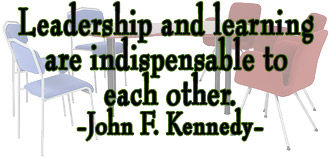Assessment FOR and OF Learning
Realizing that Friday was a lot of information, and a lot of accumulated late hours... I wanted to provide a quick overview of Standard 4: Assessment to bring our conversations about this topic back up to the front of your thinking!
Richard Stiggins' work (Assessment for Student Learning: Doing It Right—Using It Well, 2004) identifies the 5 Keys to Quality Assessment, which we reviewed last week. As you plan for your instruction this week - and think about ways to assess students' understanding, here are some things to think about:
- Clear Pupose: Why am I assessing this? Who will use the results to inform what decisions? Is the purpose to impact my instruction, and/or inform other stakeholders (students, parents, district) about how the students are doing?
- Clear Targets: An instructor needs to have a clear picture of what achievement is going to be measured. If you don't begin with clear and understandable statements of the intended learning, you won't end up with sound assessments. What am I expecting kids to know and be able to do? Am I communicating these targets clearly? What will it look like when they get it?
- Sound Assessment Design: This key ensures that the assessor has translated the learning targets into assessments that will give accurate results.Which assessment methods are most likely to produce accurate results for the different learning targets? What is the best way to measure learning for this topic? How will I check for understanding mid-way through my lesson, to make sure we're on the right track? How will I check at the end of the lesson to determine my next steps of instruction?
- Effective Communication: The instructor must plan to manage information gathered from the assessment appropriately, and report it in ways that will meet the needs of those involved. How will I measure student learning? How will I keep track of it? How will I let them know their strengths and areas of need?
- Student Involvement: Students learn best when they monitor and take responsibility for their own learning. How will I get students to interact and engage in the learning? How will I set the stage to have students track their own progress? How can I support students in figuring out their next steps?
I know Lori's name came up in many conversations on Friday - please let her know if you'd like her coaching support. Also, let me know if I can support you in any way. Whether it be in planning ways to monitor student learning related to your SLO, or figuring out how kids are doing with a concept before the formal assessment - these keys should provide guidance to your thinking. I am hoping you can take what we talked about regarding assessment, and integrate it into your daily teaching, so that we can monitor and adjust to best meed the needs of our students.
Thank you, again, for your hard work and engagement on Friday!
Sue
Thank you, again, for your hard work and engagement on Friday!
Sue
Teacher Standard 4
|
The teacher systematically gathers, analyzes, and uses relevant data to measure student progress, guide instructional content and delivery methods, and provide timely feedback to students, parents, and stakeholders.
|


